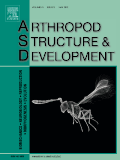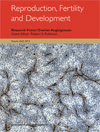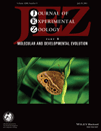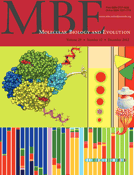
EvoDevo
Scope & Guideline
Unraveling the Complex Tapestry of Life
Introduction
Aims and Scopes
- Evolutionary Developmental Biology (Evo-Devo):
The journal emphasizes the study of how developmental processes have evolved and how they contribute to the diversity of life forms. It investigates the genetic and epigenetic mechanisms that underlie developmental changes across different species. - Comparative Developmental Studies:
EvoDevo regularly publishes comparative studies that examine developmental processes across various taxa, providing insights into evolutionary relationships and mechanisms of morphological innovation. - Molecular and Genetic Mechanisms:
A significant focus is on the molecular and genetic underpinnings of development, including gene expression, regulatory networks, and the role of specific genes in developmental processes. - Ecological and Environmental Interactions:
Research often explores how ecological contexts and environmental factors influence developmental pathways and evolutionary outcomes, integrating ecological and evolutionary perspectives. - Innovative Methodologies in Developmental Biology:
The journal features studies employing cutting-edge techniques such as single-cell sequencing, transcriptomics, and advanced imaging methods to shed light on developmental processes.
Trending and Emerging
- Single-Cell Genomics and Transcriptomics:
Recent publications have increasingly utilized single-cell sequencing techniques to explore developmental processes at unprecedented resolution, highlighting the importance of cellular heterogeneity in evolution. - Non-Model Organism Studies:
There is a growing interest in studying non-traditional model organisms, such as echinoderms and various arthropods, which offer unique insights into evolutionary and developmental processes that differ from classical models. - Integration of Evo-Devo with Ecology and Evolutionary Ecology:
Research that links developmental processes with ecological factors and evolutionary dynamics is on the rise, emphasizing the interplay between development and environmental contexts. - Innovative Techniques in Developmental Biology:
The adoption of novel experimental techniques, such as hydrogel-based protocols for clearing specimens and advanced imaging methods, is becoming more prevalent, enhancing the ability to study complex developmental patterns. - Focus on Regeneration and Developmental Plasticity:
Studies examining regeneration mechanisms and developmental plasticity are emerging as significant themes, reflecting a broader interest in understanding how organisms adapt developmentally to their environments.
Declining or Waning
- Focus on Classical Model Organisms:
There has been a noticeable decrease in studies centered around traditional model organisms like Drosophila and mouse models, as newer systems and approaches gain traction in understanding developmental biology. - Morphological Studies without Molecular Insights:
Research that solely emphasizes morphological descriptions without integrating molecular or genetic analyses has become less common, indicating a shift towards more comprehensive approaches that combine both aspects. - Historical and Fossil-Based Developmental Studies:
While historical perspectives on development and fossils provided foundational insights, recent publications show a decline in this focus, possibly as the field moves towards more experimental and comparative methodologies. - Single-Taxon Studies:
There appears to be a decline in studies focusing on a single taxon without broader comparative analyses, as the journal increasingly favors works that draw connections across multiple taxa.
Similar Journals

ARTHROPOD STRUCTURE & DEVELOPMENT
Bridging Disciplines in Arthropod ScienceARTHROPOD STRUCTURE & DEVELOPMENT, published by Elsevier Science Ltd, is a leading journal dedicated to the intricate study of arthropod morphology, physiology, and developmental biology. With an ISSN of 1467-8039 and an E-ISSN of 1873-5495, this journal plays a critical role in advancing our understanding of insect science as demonstrated by its impressive Q1 ranking in this category. It occupies a respected position within the academic landscape, being ranked Q3 in Developmental Biology and Q2 in both Ecology, Evolution, Behavior and Systematics, and Medicine (miscellaneous), illustrating its interdisciplinary appeal. Covering research from 2000 to 2024, ARTHROPOD STRUCTURE & DEVELOPMENT offers a robust platform for researchers who are keen to unlock the complexities of arthropod life, contributing significantly to the fields of entomology and ecological research. Open access options ensure that groundbreaking discoveries are readily available to a global audience, fostering collaboration and innovation. As a vital resource for students, professionals, and academics, this journal is indispensable for those dedicated to exploring the fascinating world of arthropods.

FLY
Elevating Knowledge in the Realm of FliesFLY, an esteemed journal published by Taylor & Francis Inc, is a leading resource in the field of Insect Science, offering cutting-edge research and insights into the biology, ecology, and management of flies and related insect species. With an impressive Impact Factor reflecting its high citation and publication standards, FLY serves as a vital platform for researchers and practitioners aiming to advance their understanding of this diverse and crucial group of organisms. The journal, which has been publishing since 2007 and is set to continue until 2024, is recognized as a Q1 category journal in its discipline, ranked 58 out of 181 in Agricultural and Biological Sciences, placing it in the 68th percentile of the field. Although currently non-open access, the journal is committed to disseminating valuable knowledge and fostering collaboration among scientists, offering unparalleled opportunities for professionals, researchers, and students to engage with transformative science in the insect realm.

Journal of Developmental Biology
Empowering the Future of Developmental ResearchJournal of Developmental Biology, published by MDPI, is an esteemed open access journal that has been contributing to the field since its inception in 2013. With a focus on developmental processes across various biological systems, this journal serves as a vital platform for disseminating cutting-edge research and fostering dialogue among experts in the fields of Cell Biology, Developmental Biology, and Molecular Biology. The journal currently holds a commendable Q2 ranking in both Developmental Biology and Molecular Biology, underscoring its significance in advancing knowledge within these domains. Operating out of Switzerland, and featuring an engaging array of articles, the journal prioritizes accessibility through its Open Access model, further expanding the reach of vital research findings. Whether you are a seasoned researcher or an enthusiastic student, the Journal of Developmental Biology provides an essential resource for the latest insights and developments in this rapidly evolving field.

NATURE REVIEWS GENETICS
Advancing the Frontiers of Genetic Discovery.NATURE REVIEWS GENETICS, published by NATURE PORTFOLIO, stands as a leading journal in the field of genetics, boasting a remarkable reputation reflected in its Q1 ranking across multiple categories including Genetics, Clinical Genetics, and Molecular Biology. With an impressive percentile of 99th in both Genetics and Clinical Genetics, as well as a solid rank in Molecular Biology, this journal is pivotal for researchers, professionals, and students alike who seek to stay informed on the latest advancements and comprehensive reviews in genetic research. The journal's scope encompasses a wide array of topics, providing in-depth insights from fundamental genetic principles to clinical applications, underscoring its importance in bridging basic science and medical practice. Though not an open-access publication, it remains accessible through various academic institutions, enhancing its reach and influence within the scientific community. With publication years spanning from 2000 to 2024, NATURE REVIEWS GENETICS continues to shape the future of genetics research and education.

DEVELOPMENTAL BIOLOGY
Driving Innovation in Developmental BiologyDEVELOPMENTAL BIOLOGY, published by Academic Press Inc., Elsevier Science, stands as a pivotal journal in the fields of cell biology, developmental biology, and molecular biology since its inception in 1959. Renowned for its rigorous peer-review process, this journal serves as a platform for publishing cutting-edge research, reviews, and insights that drive forward our understanding of developmental processes at the cellular and molecular levels. With an impressive track record, it is classified in the Q2 quartile across multiple categories, reflecting its significant impact and relevance in academia and research communities. Although the journal does not provide Open Access options, it remains accessible via numerous academic databases, ensuring a wide reach for researchers, professionals, and students alike. With a commitment to advancing the field, DEVELOPMENTAL BIOLOGY continues to be essential reading for those looking to stay at the forefront of developmental research and its applications.

GENETICS AND MOLECULAR RESEARCH
Advancing the Frontiers of Genetics and Molecular BiologyGENETICS AND MOLECULAR RESEARCH is a distinguished academic journal published by FUNPEC-EDITORA, focusing on the rapidly evolving fields of genetics and molecular biology. Since its inception in 2002, the journal has provided a platform for high-quality research and advancements that contribute to our understanding of genetic mechanisms and molecular interactions. With an impressive convergence period extending through 2024, this open-access journal presents vital insights while maintaining accessibility for researchers, professionals, and students alike. Though currently positioned in the Q4 quartile in Genetics, Medicine (Miscellaneous), and Molecular Biology as per the latest 2023 rankings, its persistent publication efforts aim to elevate its influence within the academic community. Researchers are invited to explore groundbreaking studies that may inform future developments in these critical scientific domains.

REPRODUCTION FERTILITY AND DEVELOPMENT
Exploring the frontiers of fertility and developmental research.Reproduction, Fertility and Development, published by CSIRO Publishing, is a prestigious journal that has been at the forefront of research in the fields of reproductive science, developmental biology, and related disciplines since its inception in 1989. With an ISSN of 1031-3613 and an E-ISSN of 1448-5990, this journal serves as a vital platform for disseminating innovative findings and methodologies that advance our understanding of reproductive processes and development in a variety of organisms. The journal is indexed in prominent databases, exhibiting a solid standing with a Q3 quartile ranking in both Animal Science and Zoology and Biotechnology, and covering 2023 rankings in multiple related categories. Operating from Australia, Reproduction, Fertility and Development embraces a commitment to enriching scholarly communication and fostering collaborative research efforts. Its focus on high-quality, peer-reviewed articles makes it an essential resource for researchers, professionals, and students seeking to stay abreast of the latest advancements and pivotal discussions in reproductive medicine and developmental biology.

Annual Review of Genetics
Elevating Understanding in the Evolving World of Genetics.The Annual Review of Genetics is a premier academic journal dedicated to advancing the field of genetics through critical, comprehensive reviews that synthesize current research and highlight future directions. Published by Annual Reviews, this esteemed journal boasts an impressive impact factor, ranking in the Q1 category for Genetics, and holds a distinguished position as 14th out of 347 journals in the Scopus ranking for Genetics, placing it in the 96th percentile among its peers. With its convergence of knowledge from 1970 to 2023, the journal serves as an essential resource for researchers, professionals, and students alike, facilitating a deeper understanding of genetic principles and their applications. Although the journal is not open access, it remains a vital platform for disseminating high-quality, peer-reviewed content that shapes the conversation in genetics, making it a must-read for those seeking to stay at the forefront of this dynamic field.

JOURNAL OF EXPERIMENTAL ZOOLOGY PART B-MOLECULAR AND DEVELOPMENTAL EVOLUTION
Integrating insights to illuminate the pathways of evolution.JOURNAL OF EXPERIMENTAL ZOOLOGY PART B-MOLECULAR AND DEVELOPMENTAL EVOLUTION, published by Wiley, is at the forefront of research in the fields of molecular biology, developmental biology, and evolutionary science. With an impressive impact factor reflective of its significance, this journal maintains a prominent position in the academic landscape, evidenced by its Q1 ranking in Animal Science and Zoology, as well as Ecology, Evolution, Behavior and Systematics for 2023. It rigorously publishes innovative research spanning a wide array of topics pertinent to molecular and developmental evolution, making it an invaluable resource for researchers, professionals, and students alike. This journal not only offers Open Access options, enhancing the visibility of groundbreaking findings, but also supports interdisciplinary collaboration by integrating insights from genetics and molecular medicine. With a commitment to advancing knowledge, the journal is poised to contribute significantly to our understanding of biological processes and evolutionary dynamics through its convergence of research from 2003 to 2024.

MOLECULAR BIOLOGY AND EVOLUTION
Transforming Understanding of Life's Evolutionary JourneyMOLECULAR BIOLOGY AND EVOLUTION, published by Oxford University Press, stands as a premier journal in the fields of molecular biology, evolutionary biology, and genetics. With a proud history dating back to its inception in 1983, the journal spans a convergence period through 2024, providing an exceptional platform for disseminating high-quality research. The journal is recognized in the top Q1 quartile across multiple categories, including Ecology, Evolution, Behavior and Systematics, and Genetics, reflecting its significant impact and relevance in these disciplines. With impressive Scopus rankings—10th in Ecology and Evolution, 12th in Genetics, and 22nd in Molecular Biology—it serves as a vital resource for scholars aiming to stay informed on cutting-edge developments in evolutionary processes and molecular genetics. While it currently does not offer open access, its curated contents resonate well with an audience of researchers, professionals, and students deeply interested in accelerating their understanding of the complexities of life through an evolutionary lens.